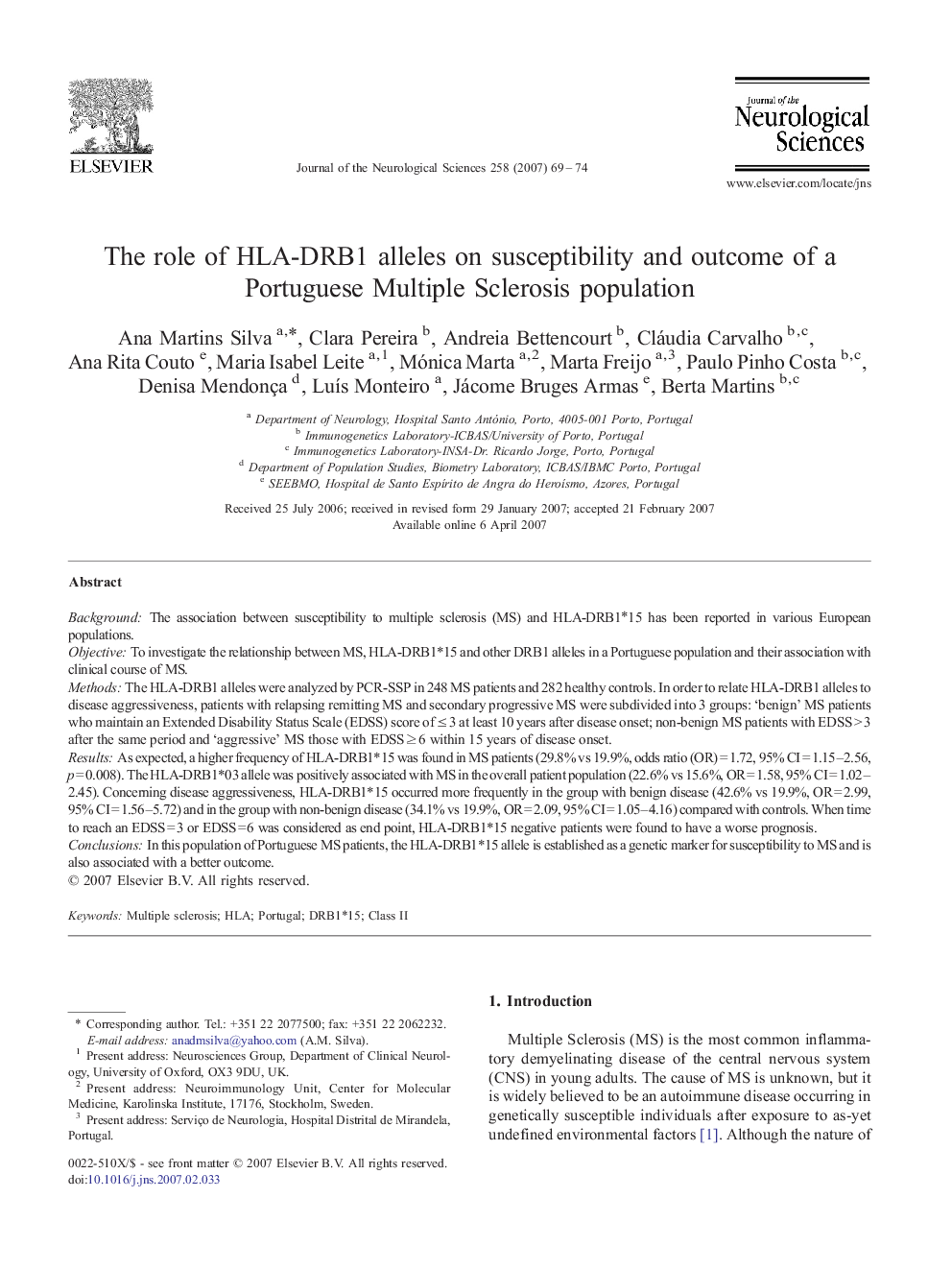| Article ID | Journal | Published Year | Pages | File Type |
|---|---|---|---|---|
| 1916196 | Journal of the Neurological Sciences | 2007 | 6 Pages |
BackgroundThe association between susceptibility to multiple sclerosis (MS) and HLA-DRB1⁎15 has been reported in various European populations.ObjectiveTo investigate the relationship between MS, HLA-DRB1⁎15 and other DRB1 alleles in a Portuguese population and their association with clinical course of MS.MethodsThe HLA-DRB1 alleles were analyzed by PCR-SSP in 248 MS patients and 282 healthy controls. In order to relate HLA-DRB1 alleles to disease aggressiveness, patients with relapsing remitting MS and secondary progressive MS were subdivided into 3 groups: ‘benign’ MS patients who maintain an Extended Disability Status Scale (EDSS) score of ≤ 3 at least 10 years after disease onset; non-benign MS patients with EDSS > 3 after the same period and ‘aggressive’ MS those with EDSS ≥ 6 within 15 years of disease onset.ResultsAs expected, a higher frequency of HLA-DRB1⁎15 was found in MS patients (29.8% vs 19.9%, odds ratio (OR) = 1.72, 95% CI = 1.15–2.56, p = 0.008). The HLA-DRB1⁎03 allele was positively associated with MS in the overall patient population (22.6% vs 15.6%, OR = 1.58, 95% CI = 1.02–2.45). Concerning disease aggressiveness, HLA-DRB1⁎15 occurred more frequently in the group with benign disease (42.6% vs 19.9%, OR = 2.99, 95% CI = 1.56–5.72) and in the group with non-benign disease (34.1% vs 19.9%, OR = 2.09, 95% CI = 1.05–4.16) compared with controls. When time to reach an EDSS = 3 or EDSS = 6 was considered as end point, HLA-DRB1⁎15 negative patients were found to have a worse prognosis.ConclusionsIn this population of Portuguese MS patients, the HLA-DRB1⁎15 allele is established as a genetic marker for susceptibility to MS and is also associated with a better outcome.
